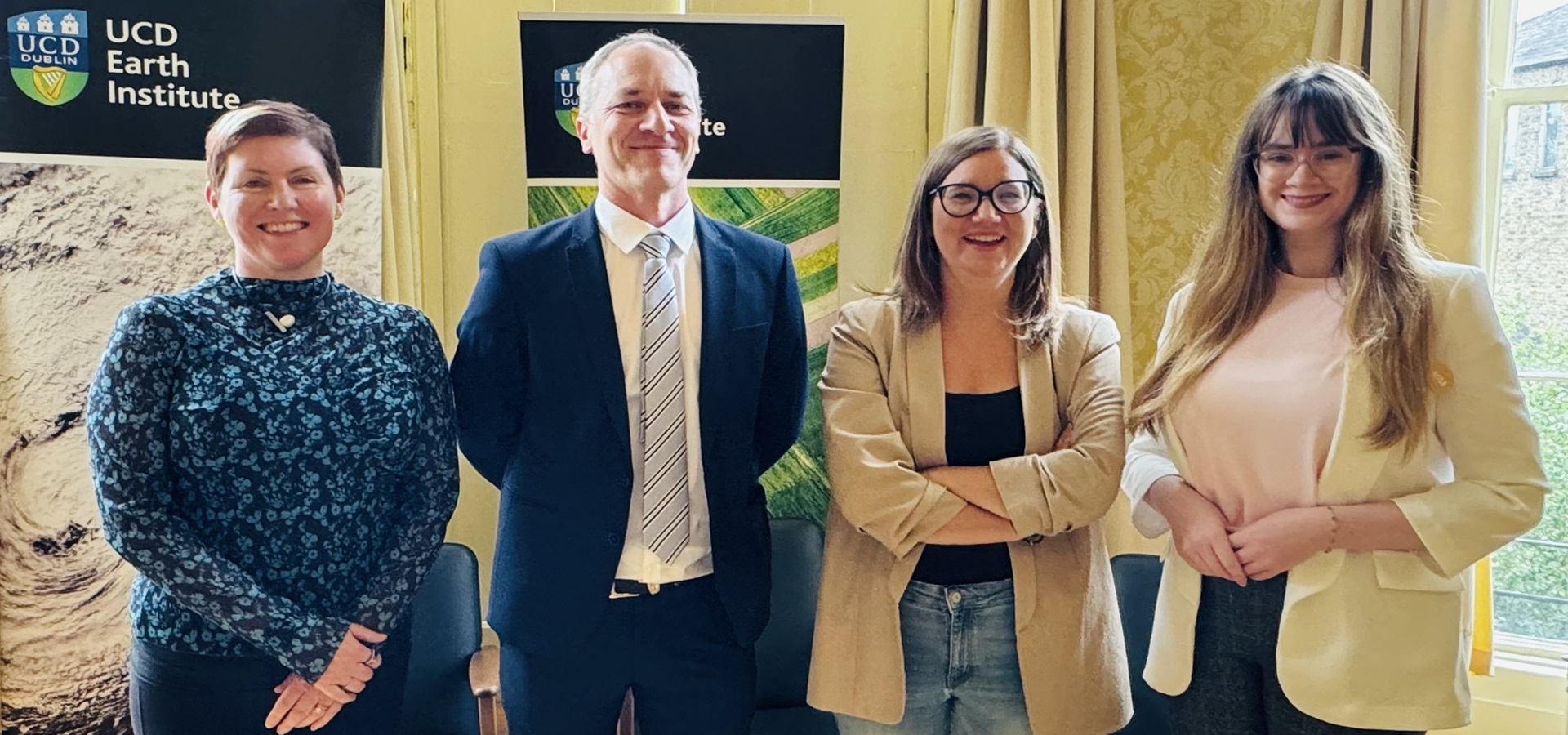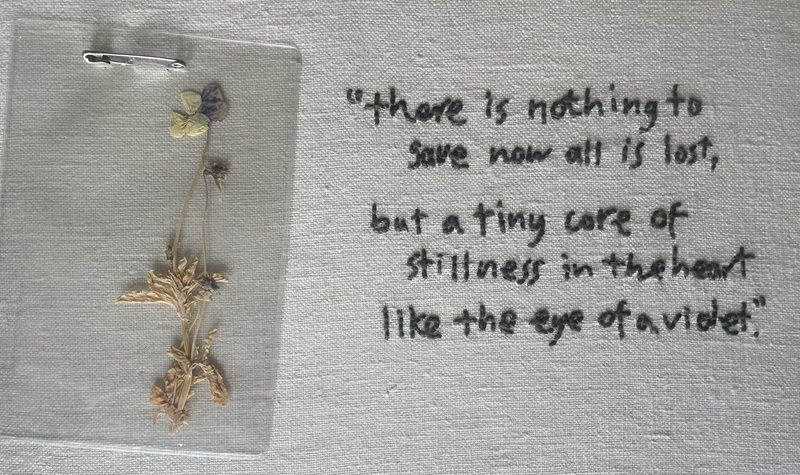Insights from previously funded SPSM projects
The Strategic Priority Support Mechanism call has just opened for 2021. We asked some of our previous SPSM awardees about their experiences in putting an application together, how the process went and any insights they could offer on finding collaborators and budgets. As always, if you have any questions please get in touch.
Community SDG Dashboard
Measuring Sustainable Actions at Community Level (Community SDG Dashboard) was funded in 2020. It aims to create an academic-community partnership between the UCD Earth Institute researchers and the Dundrum 2030 community group to foster social engagement for systematically monitoring the implementation of the Sustainable Development Goals (SDGs) at the local level.
Dr Ainhoa Gonzalez Del Campo told us about her experiences.
Where did the idea come from?
The idea was developed when chatting to Lyn from Dundrum2030 about the possibility to monitor local initiatives and their contribution towards SDGs, and the potential of GIS to gather, manage and visualise data to aid this monitoring process.
How did you find collaborators?
It happened naturally when the community group contacted me about something else. I then went looking for other UCD academics that were working on sustainability-related projects, and the Earth Institute team were great at pointing to some key people that then became project partners.
How did you find the application process?
The application process was straightforward - it is a short application that did not take long to complete. I found it really useful to circulate to colleagues for review and comment.
Centre for Irish Towns
The Centre for Irish Towns was funded in 2019. The Centre is an emergent trans-disciplinary centre for research and collaboration in UCD focused on the towns of the island of Ireland. We asked project leads Dr Orla Murphy and Dr Philip Crowe about how the project came together and their plans.
Where did your original idea come from?
The idea emerged over several conversations Philip and I had about the challenges facing towns, from our experience in spatial practice and research. The complex nature of towns, as urban systems, seemed to cry out for a trans disciplinary approach and UCD has such a wealth of research excellence across disciplines, that it seemed like a natural next step to see if a research centre, based within in UCD, but connected outwardly to other institutions and agencies, would be helpful in addressing the cross-cutting nature of towns.
How did you go about finding collaborators?
We made a list of people who we thought might be interested in being part of the initial idea of an academic centre focused on Irish towns, and then sounded them out about it. We were delighted by the extent of support across the board for it, we were really pushing on open doors.
How did you find the application process?
The application process was comprehensive but really useful to us, to help us figure out what the priorities were for the project. We used a Theory of Change diagram to help us to identify the outcomes and impacts and the steps to achieve them.
How did you use the project budget?
We used the budget to cover graphic design and printing of a brochure, to cover workshop expenses, and for part-time staff costs.
What future plans do you have?
With the centre now established, the next steps are to develop the collaborative network across the island of Ireland and internationally, identify and pursue research opportunities, understand and respond to the challenges of Irish towns, and contribute to national policy. We’re planning our website to connect members and others interested in collaborating, and as a repository for research projects. We also hope to build teaching and learning resources so that UCD can be seen as the go-to centre of excellence in Ireland for research and practice related to Irish towns.
DIVERSICROP
DIVERSICROP is a UCD consortium funded in 2019 that aims to: 1) encourage partners from strategic areas to explore such changes, namely from crop sciences, culture and society, nutritional impact and policy-making ; and 2) Develop and submit a COST action focused on diversification of crop production in Europe.
Project leads Dr Sónia Negrão and Dr Meriel McClatchie explained a little about how the project came about.
Where did your original idea come from?
The original idea stemmed from conversations between the two Co-PIs at UCD and Earth Institute research events, where they learned that both were investigating crops but from very different perspectives – one focusing on modern crop science and the other on crops grown thousands of years ago. We developed a collaborative project – DIVESRICROP – which also brought in UCD researchers in nutrition and policy to enable a more comprehensive approach towards diversifying crop production and sustainably producing nutritious food.
How did you go about finding collaborators?
The SPSM enabled a framework to develop the project and attract collaborators. We have benefited greatly from the wealth of experience in the Earth Institute on project and network development.
How did you use the project budget?
It has facilitated the appointment of a project administrator (which has been crucial in a project with a large and diverse team and a complex research challenge).
What future plans do you have?
We are well underway with our plans to submit a COST Action application in Autumn 2021. We have established a network of 33 partners from 13 countries across Europe. Our European partners are experts in the four DIVERSICROP research pillars of Crop Science, Nutrition, Ancient History and Policy.
ECOBROKER: co-producing knowledge between practitioners and researchers to address complex societal problems
ECOBROKER was funded in 2018. It aims to develop a knowledge exchange platform and related communication tools under the UNESCO Man and the Biosphere Programme (MAB) programme to effectively link research with practice in environmental policy, management and governance. Dr Tamara Hochstrasser explained about the project.
Where did your original idea come from?
It came from my research on the science-practice interface. And maybe also a constant flow of research proposals from Maryann, Parks and Landscape Officer in Dublin City Council when working with her.
How did you go about finding collaborators?
I wanted to make sure that I cross schools and institutional boundaries as much as possible, so I contacted whom I knew from different schools and local authorities.
How did you find the application process?
it was easy. My research is very much aligned with the Earth's institute's strategy as I'm aiming to do transdisciplinary research.
How did you use the project budget?
I was costing the workshops based on a budget I had done for another research proposal. The webpage was costed based on the experience of other investigators who had recently done a webpage. In particular, I was asking Keith Lambkin from Met Eireann who had done a 'low cost' website for the Agmet group.
What kind of outcomes were there from the project?
The discussion amongst stakeholders during the project was very good and the webpage was published. It did become apparent though that a one off project is not enough and there needs to be continuous support in terms of organizing workshops.
What future plans do you have?
As above, I really would like to continue the workshops. I'm very involved currently with setting up long-term monitoring of ecosystems in Ireland, so over the past year I have had a lot of workshops with people about this, but ECOBROKER could be used by these long-term monitoring networks to solicit research on the data.

